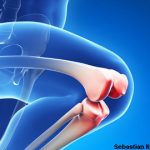He recommends thinking twice about ordering an MRI for patients in this age group who have symptoms that may not be due to meniscal tears. The test won’t necessarily advance diagnosis for these patients and can mask the true etiology of their symptoms. Up to 80% of adults with knee osteoarthritis have imaging evidence of tears, but patients with osteoarthritis and meniscal tear do not differ in the severity of their symptoms from those with osteoarthritis and no tear.
A New Diagnostic Tool
Without a gold standard for diagnosing symptomatic meniscal tears, Dr. Katz says an expert clinician’s opinion is the best approach. He hopes practitioners will adopt the study’s index as a tool for evaluating patients who present to the office with knee pain.
“I hope rheumatologists find it useful—that’s why it’s published in an arthritis journal,” he says.
The study authors note that surgeons perform more than 500,000 arthroscopic partial meniscectomies each year in the U.S., but there are conflicting data in randomized controlled trials regarding whether surgical therapy among patients with degenerative (nontraumatic) meniscal tears actually helps. Making the right diagnosis remains critical.
Today, Dr. Katz and his research team are analyzing surgical trial data and comparing them with nonsurgical therapies for meniscal tears. “We are aware that in this study and others, it’s challenging to know who exactly ought to be included in such a trial because it’s a difficult diagnosis to make.”
Kelly April Tyrrell writes about health, science and health policy. She lives in Madison, Wis.
Reference
- Katz JN, Smith SR, Yang HY, et al. Value of history, physical examination and radiographic findings in the diagnosis of symptomatic meniscal tear among middle-aged subjects with knee pain. Arthritis Care Res (Hoboken). 2017 Apr;69(4):484–490.


